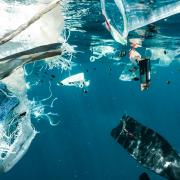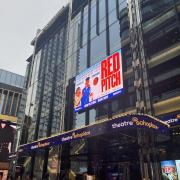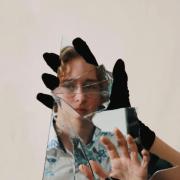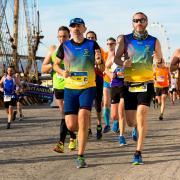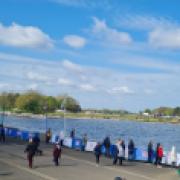
There are currently 58 orcas (killer whales) held in captivity across the world in eight different countries. A total of 151 orcas have been taken from the wild since 1961 and 127 of them have died. There have been 162 orca deaths in captivity and this number will continue to rise if something is not done to stop the atrocity that is marine mammal parks.
These mammals are so intelligent. They possess an emotional part of the brain that is larger than that of any human’s. The limbic system (a system of nerves and networks in the brain) in a killer whale consists of a paralimbic region which is much larger than humans; this indicates their ability to process emotions more and have a wider range of emotions compared to humans.
The main point of my article is to raise awareness of the suffering that these cetaceans endure for human entertainment. Animal exploitation has become a multi-million dollar industry where hardly any of the profit goes towards conservation of the animals. For every $1 million of Sea World’s revenue only $600 goes towards conservation. This statistic shows how little these people care about the animals they have a duty to care for.
Blackfish – a documentary that came out in 2013 highlighted the danger that these animals in marine mammal parks like SeaWorld are in. The danger is not just to the animals but also to the trainers. One of the male orcas Tilikum, who is 33 years old and has been in captivity for 31 years, has killed three people. There have also been a considerably high number of incidents involving orcas and their trainers at marine mammal parks like SeaWorld. It is not safe for the whales and it is certainly not safe for the trainers.
Ever since the film debuted SeaWorld has lost a considerable amount of money. This is good as maybe they will finally see the detrimental impact that captivity has on these creatures. In the wild an orca would swim in its pod with other orcas from its family, it would be able to swim up to 100 miles a day in fresh water where the levels of nutrients are correct and its dorsal fin would not be collapsed over to one side. The sign of a collapsed dorsal fin on a killer whale is a sign of stress and bad health however SeaWorld claims this is ‘natural’ and also happens in the wild. This is incorrect. The tanks at marine mammal parks contain less than 1% of the amount of water these animals would be used to swimming in. The tanks may look big in pictures but in comparison to the ocean they are basically the size of a bathtub.
At marine mammal parks like SeaWorld they use behaviour modification which means to deprive the animals of their food until they perform the correct behaviour. This results in many of the animals being underweight and often they chew the sides of the tank due to hunger or boredom which results in dental problems for the animals. Orcas are extremely sociable animals and in the wild would live in a pod of between 2 – 15 orcas. These animals are forced to live in the tiny tanks side by side with other whales who are not from their pod; they aren’t related at all unless by artificial insemination. Essentially it is the same as putting two humans who speak completely different languages and have different cultures together in a bathtub for their entire life.
Samantha Berg a former SeaWorld trainer and star of the documentary Blackfish has said “The more intelligent an animal is and the more complex their social structure is the more they suffer in captivity.” I think this is completely true but I also think that animals should not be in captivity at all – they do not belong there. I am completely for rehabilitation of animals where they are cared for when injured or endangered but the difference between rehabilitation and marine mammal parks or a circus is that the animals get to return home to the wild – where they should be.
I am very pleased to say that recently SeaWorld has been banned from breeding animals in captivity. This was done by the California Coastal Commission. Unfortunately it does come at a cost as SeaWorld applied to build new tanks for the animals and this was only approved "under a condition that would prohibit captive breeding, artificial insemination, and the sale, trade or transfer of any animal in captivity."
I am hoping that you will take away from this article the fact that these breath-taking animals should not be in captivity. It is an utter shame that obviously none of these animals would survive if they were put back into the wild because they are used to human interaction, medication and being fed thawed dead fish. But there have been proposals of retiring these animals to sea pens and marine sanctuaries to teach them how to fend for themselves and do what they would naturally do in the wild. It will take many years but the story of Keiko, the star of Free Willy, has proven that releasing these animals can be done. If this article helps to change just one person’s opinion on animals in captivity especially cetaceans then I would feel immensely happy. It only takes one person to tell others. We can help to set these animals free, stop them from dying so prematurely and empty the tanks.








